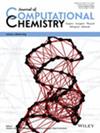Mechanistic Study of LIDT Reduction in KH2PO4 With Yi Predicted by Density Functional Theory
Abstract
The defect formation energy, electronic structures, and optical properties of paraelectric phase (PE-KDP) and ferroelectric phase (FE-KDP) crystals with Y interstitial (Yi) defects have been investigated using density function theory. The band-edge correction and FNV correction accurately determine the defect formation energies of the Yi defects in different charge states. The presence of transition energy levels in the band gap may indicate that the Yi defect has a significant impact on the properties of the FE-KDP. The +3 charged Yi defects are more stable. The electronic properties in the 2p orbital mainly contribute to the defect states in the band gap, which provides the possibility of multiphoton transition of electrons. New transparent absorption bands near 3.47 eV (357 nm) and 5.66 eV (219 nm) were calculated in PE-KDP, and the absorption bands caused by Yi defects and strong electron–phonon coupling under the FE-KDP structure showed that the light in the wavelength bands near 5.09 eV (244 nm) and 5.79 eV (214 nm) below the phase transition temperature (123 K) damaged the KDP crystal. The distortion of atoms near the defects indicates that Yi defects may be accompanied by intrinsic defects. The calculated values are highly consistent with the critical absorption observed at 355 nm in the experiment and the new absorption weak at 230 nm produced in the crystal after low-temperature X-ray irradiation, which suggests that the Y defect may be the key factor affecting the laser-induced damage threshold (LIDT) of the KDP crystal.


 求助内容:
求助内容: 应助结果提醒方式:
应助结果提醒方式:


